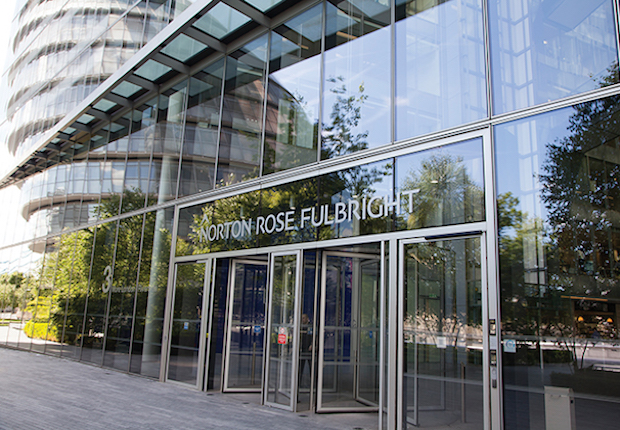
Global law firm Norton Rose Fulbright has reported a 17% mean gender pay gap for fixed hourly pay as at 5 April 2017.
The organisation has reported its gender pay gap data in line with the government’s gender pay gap reporting regulations and ahead of the private sector submission deadline of 4 April 2018.
The gender pay gap reporting regulations require organisations with 250 or more employees to publish the difference between both the mean and median hourly rate of pay for male and female full-time employees; the difference between both the mean bonus pay and median bonus pay for male and female employees; the proportions of male and female employees who were awarded bonus pay; and the proportions of male and female full-time employees in the lower, lower middle, upper middle and upper quartile pay bands.
Norton Rose Fulbright’s median gender pay gap for fixed hourly pay as at 5 April 2017 is 23.8%.
Its mean gender pay gap for bonuses paid in the year to 5 April 2017 is 36%, and the median gender pay gap for bonus payments is 31.6%. Over this period, 27.2% of female employees received a bonus payment compared to 36.7% of male employees.
More than half (54%) of employees in the highest pay quartile at Norton Rose Fulbright are female, compared to 53% in the second quartile, 59% in the third quartile and 75% in the lowest pay quartile.
Norton Rose Fulbright has voluntarily published its gender pay gap data for its partner population, which receives a share in the organisation’s profits rather than pay. For UK partners in management positions, the mean gender pay gap is 19% and the median gender pay gap is 17%. The mean gender pay gap for bonuses is 38% in favour of women, and the median bonus gender pay gap is 21%, also in favour of women.
Norton Rose Fulbright has pinpointed a few contributing factors that has influenced its gender pay gap. For example, the greatest gender imbalance is found in the organisation’s lowest pay quartile, which typically features administrative and secretarial roles. The law firm’s analysis shows that if these job roles were removed from the gender pay gap data, the mean gender pay gap would reduce to 10.9% and the median gender pay gap would decrease to 2%. Norton Rose Fulbright believes its gender pay gap can therefore, in part, be attributed to different job types and levels of seniority.
Regarding its gender pay gap for bonuses, Norton Rose Fulbright’s analysis shows that this is in partly influenced by the fact that the higher proportion of female staff employed in its lowest pay quartile are not generally eligible for bonus payments, and also that the bonuses awarded to women were, on average, of a lower value. This is because 91% of the female employees who received a bonus work on a part-time basis, therefore the amounts they receive are pro-rated to reflect the number of hours they work. Also, more men than women occupy senior positions in the organisation and these roles tend to attract higher bonus levels.
Norton Rose Fulbright’s analysis further demonstrated that there is a higher number of male partners at the senior end of the partnership compared to female partners, although 60% of the partners promoted on 1 May 2017 are female.
To address its gender pay gap, Norton Rose Fulbright has introduced a global development programme, called Our Career Strategies Programme, which offers opportunities and support such as one-to-one coaching to senior female lawyers. The law firm has additionally implemented inclusive leadership training and unconscious bias education, coaching for expectant parents, and maternity and shared parental leave policies that provide full pay for the first 28 weeks of leave.
The organisation also has its Women in Norton Rose Fulbright (WiN) network, which offers learning, development and networking opportunities, as well as its Early WiN network that is specifically for employees in the early to mid-stages of their career.
Norton Rose Fulbright aims to have women make up 30% of its global partnership by 2020; currently this figure is 26%. The organisation has further committed to try to increase the percentage of female partners on all board and management committees globally to 30%. To date, 40% of its Europe, Middle East and Africa (EMEA) management committee are female and 40% of its partnership committee are also women.
Farmida Bi, chair elect at Norton Rose Fulbright, said: “Diversity and inclusion is a central tenet of our people and business strategy. Although it is not a statutory requirement to report on partner data, we wanted to be open and transparent with our people. We have made good progress in our journey to achieving greater diversity in our workforce. This transparency will help us to continue our work in improving diversity across the business.”